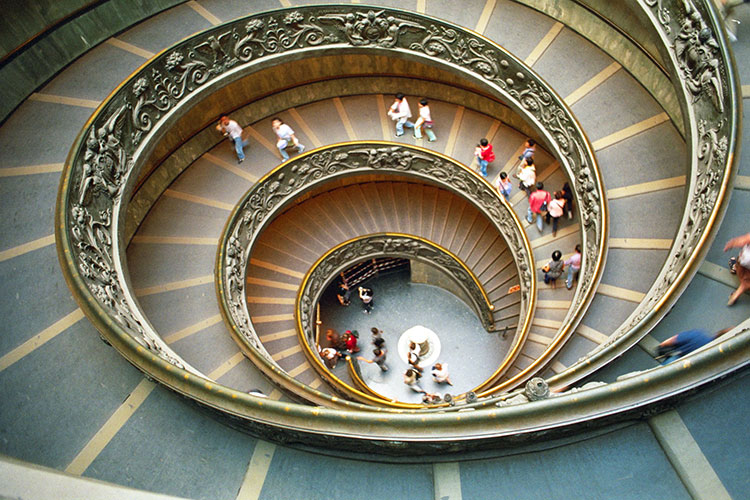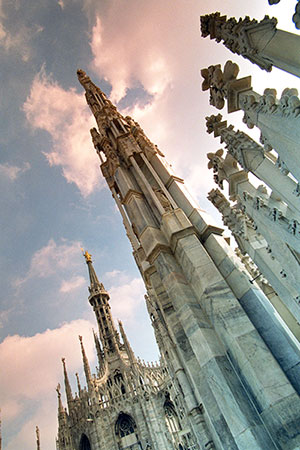What’s new in Italy in 2010
This item appears on page 57 of the June 2010 issue.
One reason why Italy is so much fun is that it just keeps changing. Here are a few new developments that will be handy for you to know if you’ll be visiting the land of “la dolce vita.”
• Rome may be the “Eternal City,” but that doesn’t mean it has stopped evolving. The Vatican Museum, starring the Sistine Chapel, now has an online reservation system that’s a godsend; visit http://biglietteriamusei.vatican.va.
If you’re visiting in the morning, a ticket reservation will save you big time. With the reservation, or if you’re on a guided tour, you can bypass the long ticket-buying line. Hallelujah!
Without a reservation, it’s better to visit in the afternoon, when the museum’s notorious ticket lines die down.
• There’s a new taxi scam in Rome (actually, that’s nothing new). A recent law limits the taxi fare from the airport into town to €40 (near $55), yet some cabs post an “official 60-euro rate” sign for the same trip. These cabbies are taking advantage of a loophole: the 40-euro fare is for Rome cabs, while taxis based outside of Rome get a break because they need to drive out of the city again.
At least it’s easy to beat this scam. When leaving the airport, choose a Rome city cab (look for “SPQR” on the door) and you’ll save around $28.
• Another new regulation will impact many budget travelers: Rome’s official ban on picnicking at historic monuments. While it probably won’t be too strictly enforced, one place you’re likely to be fined for picnicking is on the Spanish Steps. You should be okay if you eat with a view rather than on the view.
• Venice is crowded, expensive and confusing. If you keep up to date on this city, you find it’s still the same, just less so.
The famous and much-photographed Bridge of Sighs, which connects two wings of the Doge’s Palace over a canal, is surrounded by scaffolding — and will be for the next few years — due to restoration. In past years, Venetian scaffolding was masked with beautiful murals to disguise the construction work. Now, thanks to our more cash-strapped age, most of Venice’s scaffolding is covered with advertising.
• Despite the economic downturn, there’s one new price break. Venice’s city museums now offer youth and senior discounts to Americans and others who aren’t citizens of the European Union. The museums include the Doge’s Palace, the Correr Museum and the Clock Tower on St. Mark’s Square, among others.
Venice’s top art museum, the Accademia, is still being expanded and renovated. In 2010, expect some rooms to be closed for construction and many of its paintings to be displayed in different rooms.
• This year, you can expect more controversy over Venice’s Calatrava Bridge, a.k.a. Constitution Bridge, which spans the Grand Canal from the train station to Piazzale Roma. The bridge, designed by Spanish architect Santiago Calatrava, opened in 2008 after delays, cost overruns and questions about its stability. Its modern design is a sore point for a city with such rich medieval and Renaissance architecture.
Adding fuel to the controversy, the sleek form does not allow for wheelchair access, and critics question whether the bridge adequately serves the daily hordes of tourists. Dozens of visitors have twisted their ankles due to its irregular steps and its mix of glass and stone flooring.
• As more travelers get smart about flying into smaller airports, Venice’s Marco Polo Airport is getting more use. Along with boats and city buses, now there’s one more way to connect Venice with its airport on the far side of the lagoon: a private shuttle service (phone +39 338 20 44 390, fax +39 0422 83 23 11, www.trevisocarservice.com) that charges about $70 per minivan (seats up to eight).
Also, a new minibus service (phone +39 049 8704425, fax +39 049 8705050, www.airservicepadova.it) links Venice’s Marco Polo and Treviso airports with the nearby city of Padua.
• Florence still packs them in, and for good reason. The Accademia houses Michelangelo’s buff shepherd-boy masterpiece, “David.”
A few blocks away, the Uffizi Gallery has the best collection of Italian paintings anywhere, but it is undergoing a massive renovation to create new exhibition space and new entrances. Scheduled until at least June 2011, the construction and reshuffling may affect your visit. Paolo Uccello’s “The Battle of San Romano” may be out for restoration, but Raphael’s “Madonna of the Goldfinch” is finally back on display after a laborious 10-year restoration.
To avoid waiting in very long lines, it’s smart to get Uffizi and Accademia reservations in advance. Here are two good ways: through your hotelier (request this service when you book your room) or by phone (from the US, dial 011 39 055 294 883). You can book online at www.b-ticket.com/b-ticket/Uffizi, though some of my readers have encountered difficulties using this website.
If you’re in Florence during the off-season (October through March), you can probably get into the Uffizi or Accademia without a reservation in the late afternoon on weekdays, but wise travelers will avoid potential hassles by making a reservation in advance.
• Milan offers perhaps the most enjoyable look at modern, urban Italy. Its Duomo Museum (www.duomomilano.it), which gives meaning to Milan’s richly ornamented cathedral, is scheduled to reopen sometime in 2010 after a long restoration.
• Italy’s Riviera — at least the five remote villages of the Cinque Terre now protected as a national park — is more welcoming than ever. While hoteliers in this popular region near Genoa are notorious for artificially bumping up prices, travelers have more negotiating power now due to the economic downturn. Shop around before you commit to a room.
The Cinque Terre Card, which covers a day of hiking in the region’s national park, now also includes a free, three-hour bike rental; bikes are available through tourist offices in the towns of Riomaggiore and Vernazza.
For many years there was no place to check your luggage, but now you can store bags at the national park’s kiosk at Riomaggiore’s train station.
• Assisi, the birthplace of St. Francis, is notoriously congested with cars and tour buses, but it just got easier to park your car at the edge of town. The Parking Mojano lot, while below the Old Town, now comes with an escalator that transports you nearly to the Basilica of St. Clare. It’s a blessing.
Italy may have Europe’s richest (and craziest) culture. These recent changes make it even easier to enjoy — and harder to forget.


